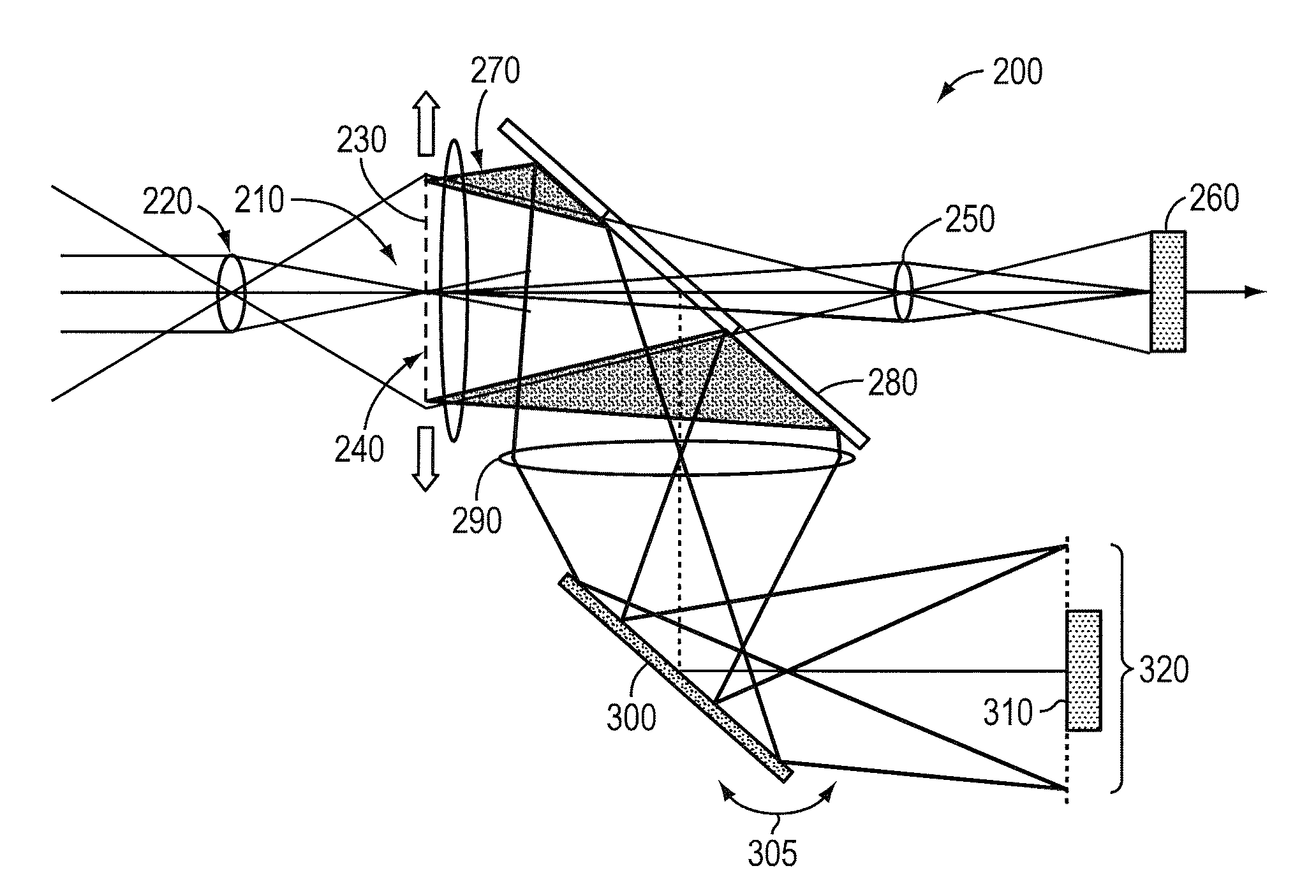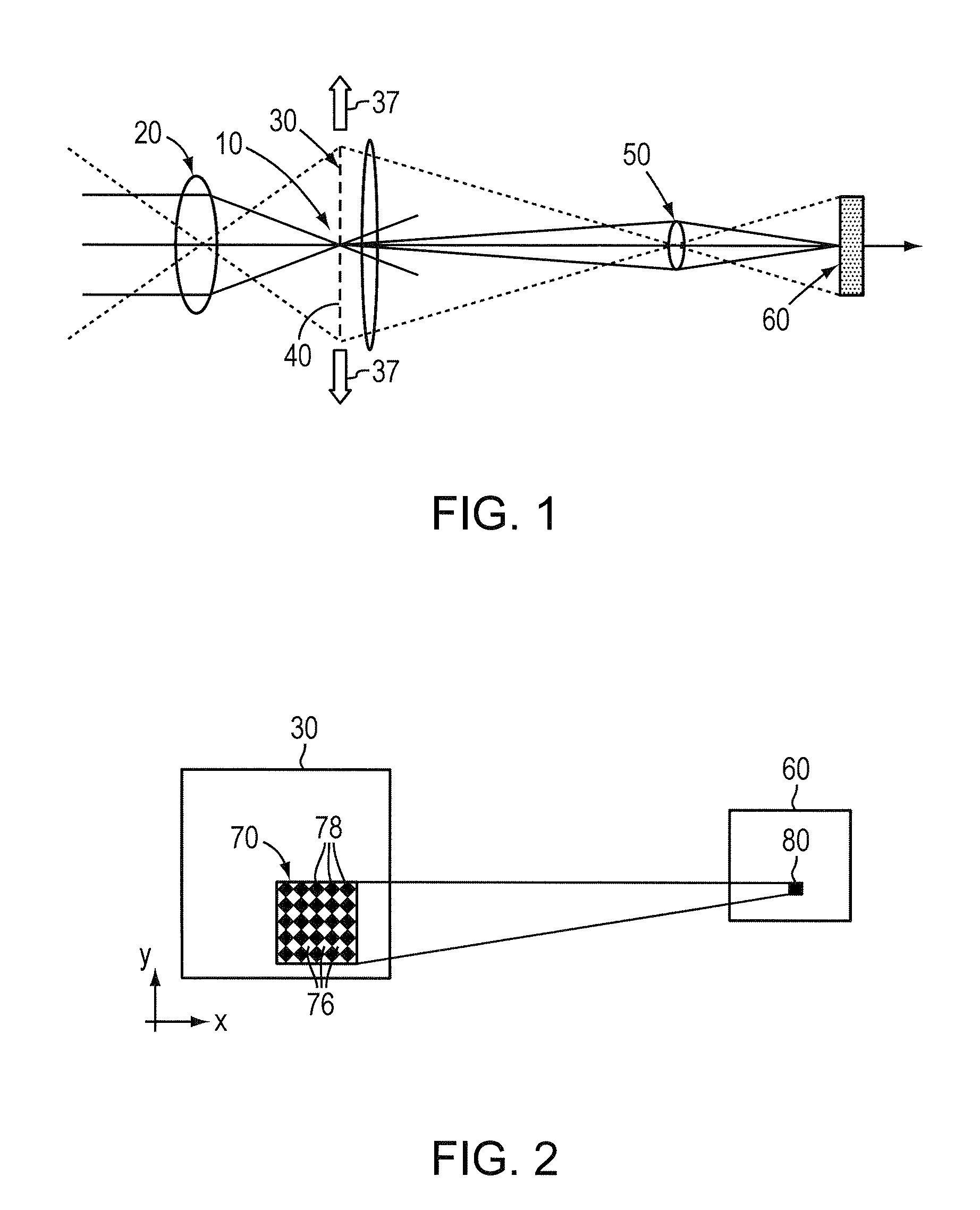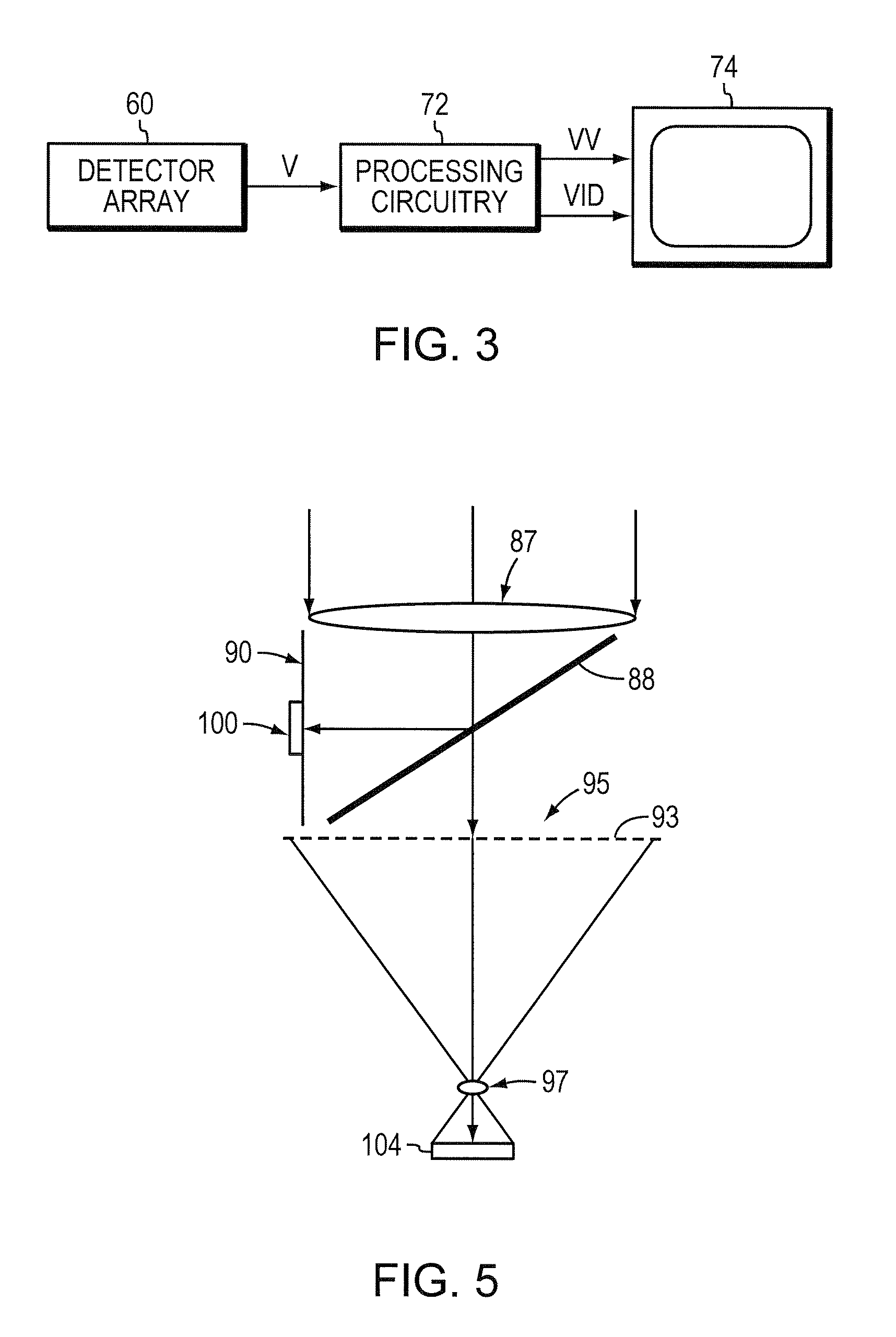System and method for high-resolution with a small-format focal-plane array using spatial modulation
a technology of spatial modulation and focal plane, applied in the field of system and method for high-resolution with a small-format focal-plane array using spatial modulation, can solve the problems of imposing a processing sensing and processing load that is often impractical to bear, and achieves a high level of clutter suppression, maximize the use of all output frames, and reduce processing load
- Summary
- Abstract
- Description
- Claims
- Application Information
AI Technical Summary
Benefits of technology
Problems solved by technology
Method used
Image
Examples
Embodiment Construction
[0045]Those skilled in the art and having the benefit of this disclosure will appreciate that the descriptions herein are by way of illustration of the principles of the invention in each case and not by way of limitation.
1. Balanced Demodulation Procedures
[0046]The function of the demodulation procedure is to derive a spatial-modulation output image VV(x,y) in which unresolved point targets are preserved at close to full intensity, whereas all other scene (i.e., clutter) detail is strongly suppressed.
[0047]With the previously referenced baseline procedure, clutter is strongly suppressed when the clutter is not moving relative to the sensor. However, the level of the residual clutter increases sharply as a function of relative scene motion. I have recognized that a high level of clutter suppression can be achieved despite a certain degree of scene motion if one employs a so-termed “balanced demodulation procedure.”
[0048]As described above, a previously used type of demodulation func...
PUM
 Login to View More
Login to View More Abstract
Description
Claims
Application Information
 Login to View More
Login to View More - R&D
- Intellectual Property
- Life Sciences
- Materials
- Tech Scout
- Unparalleled Data Quality
- Higher Quality Content
- 60% Fewer Hallucinations
Browse by: Latest US Patents, China's latest patents, Technical Efficacy Thesaurus, Application Domain, Technology Topic, Popular Technical Reports.
© 2025 PatSnap. All rights reserved.Legal|Privacy policy|Modern Slavery Act Transparency Statement|Sitemap|About US| Contact US: help@patsnap.com



